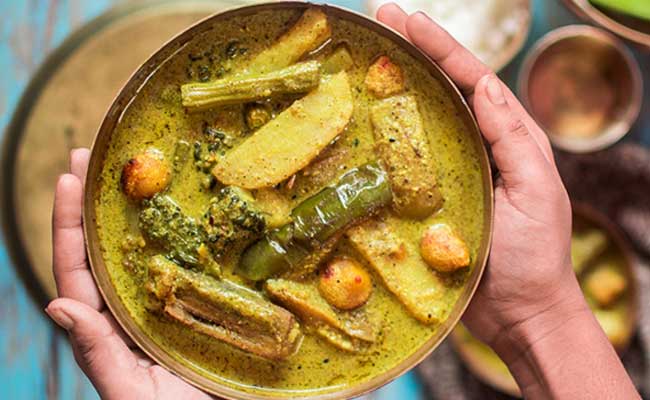Shukto: A Bengali Dish for Health and Happiness
Shukto is a traditional Bengali dish that is known for its health benefits and unique flavor. This vegetarian recipe features a variety of vegetables, including bitter gourd, eggplant, and sweet potato, in a mildly spiced mustard-based sauce. Shukto is typically served as a starter or side dish in Bengali households, and it is believed to have originated in the eastern part of India, specifically in Bengal. In this article, we will explore the history and ingredients of shukto, as well as the health benefits and preparation of this delicious dish.
History of Shukto
The history of shukto is closely tied to the cultural heritage of Bengal. It is believed that the dish was first introduced during the Mughal era in India, when the ruling class brought with them the practice of eating elaborate meals. Shukto was initially prepared as a starter or side dish to accompany rich, spicy meat dishes. Over time, shukto became more popular as a standalone vegetarian dish, especially in Bengali households.
Ingredients of Shukto
The ingredients of shukto can vary depending on the recipe and the region, but the dish typically features a combination of bitter and sweet vegetables. Some of the most common vegetables used in shukto include bitter gourd, eggplant, potato, sweet potato, raw banana, drumstick, radish, and green papaya. The dish also features a blend of spices, including cumin, coriander, ginger, and mustard. The mustard is the key ingredient that gives shukto its unique flavor.
Health Benefits of Shukto
Shukto is not only delicious but also highly nutritious. The dish is rich in vitamins and minerals, including vitamin C, vitamin A, potassium, and calcium. The bitter gourd in shukto is particularly beneficial for health, as it is known to help regulate blood sugar levels and aid in digestion. Additionally, shukto is a low-calorie dish that is high in fiber, making it a great option for those looking to maintain a healthy diet.
Preparation of Shukto
Preparing shukto can be a bit time-consuming, but the result is well worth the effort. The first step in preparing shukto is to slice the bitter gourd and soak it in salt water for about 10 minutes. This helps to remove the bitterness from the vegetable. After soaking, the bitter gourd is washed and drained.
Next, the vegetables are cut into bite-sized pieces and boiled in water until they are tender. The boiled vegetables are then drained and set aside. In a separate pan, a paste is made by grinding together mustard seeds, cumin, and coriander. This paste is then fried in oil with ginger and turmeric.
To this mixture, the boiled vegetables are added along with salt and sugar. The dish is then simmered for a few minutes to allow the flavors to meld together. Shukto is typically served hot with rice, but it can also be enjoyed as a cold salad.
Variations of Shukto
There are many variations of shukto, and each family has their own unique recipe. Some variations include adding shrimp or fish to the dish, while others include using different types of vegetables. One popular variation is to add milk or cream to the dish to give it a richer, creamier flavor.
Conclusion
Shukto is a dish that is not only delicious but also rich in history and health benefits. The blend of bitter and sweet vegetables, combined with the unique flavor of mustard, makes this dish a favorite in Bengali households. Shukto is a great option for those looking for a vegetarian dish that is both nutritious and flavorful.
![]()





